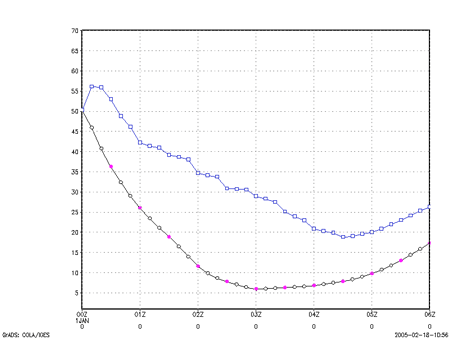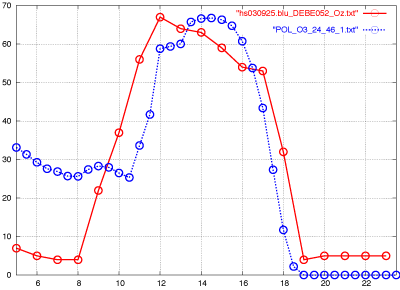
This issue in pdf Subscription Archive: Next issue: July 2005 |
|
|||||||
Data Assimilation and Air Pollution Forecasting: the Berlin Caseby German Ariel Torres, Steffen Unger, Torsten Asselmeyer-Maluga, Vivien Mallet, Denis Quélo, Bruno Sportisse, Isabelle Herlin and Jean-Paul Berroir In a joint French-German project, a three-dimensional chemistry-transport model called Polair3D has been improved in order to achieve better air pollution forecasts. The first objective of this project was to prepare the Polair3D model for forecasting the air pollution in the Berlin-Brandenburg area. Polair3D is a 3D chemistry-transport model developed by Cerea (ENPC - EdF R&D), and is used for air quality forecasting at both continental (Europe) and regional scales (urban air pollution in Paris, Lille and Marseille). The second objective is to improve the quality of the forecasts by developing a sequential data assimilation framework adapted to Polair3D. Experiments are run by assimilating data provided by the Berlin air pollution monitoring network Blume. Running Polair3D on a new application site requires a set of input data to be prepared. This comprises:
The methodology is systematic, and can be applied to regional air pollution forecasting with Polair3D in any European city for which a CityDelta emission inventory is available. Following this phase, sequential data assimilation is used to adjust model inputs and parameters, in order to minimize the difference between forecasts and measurements. This process is performed each time a new measurement is acquired, hence the name 'sequential'. Data assimilation therefore helps to improve the quality of air pollution forecasts provided by the model. One of the main advantages of sequential data assimilation is that it does not require the availability of an adjoint model, and can be implemented as a post-processing toolbox that can be plugged into any model with little effort. However, it carries a considerable computational cost, since it requires several forward runs for each new measurement.
During the project, two types of Kalman data assimilation procedure were implemented: a rank-reduced Kalman filter, which reduces the dimension of the problem, and an ensemble Kalman filter, where statistics of model errors are generated by performing many forward runs of the model. These procedures have been validated in case studies, and their use for the Berlin case is under development, since it requires the parallelization of the Kalman filter. We are currently carrying out an evaluation of Polair3D results by performing a set of forecasts for the test period April-September 2001. Forecast error statistics are then computed by comparing the forecasts with measured in situ data. The project will be completed by quantifying the improvement brought by sequential data assimilation relative to forward runs without assimilation. A comparison with variational data assimilation methods is also possible. This work has been carried out in the framework of a French-German project, funded under the Procope programme, and supported by an ERCIM post-doctoral fellowship. It involves the Clime team, a common INRIA and ENPC project located in the Paris area, and Fraunhofer FIRST, Berlin. Research was carried out at the three sites - INRIA, ENPC and Fraunhofer - during the period 2003-2004. The project is continuing through cooperation with the University of Córdoba in Argentina. Polair3D will be used for air quality forecasts in this area, which will require the preparation of an emission inventory. Sequential data assimilation will be used to improve knowledge of the emissions. During this project, the feasibility of assimilating satellite measurements of chemical concentrations will be studied. Please contact: |
|||||||



